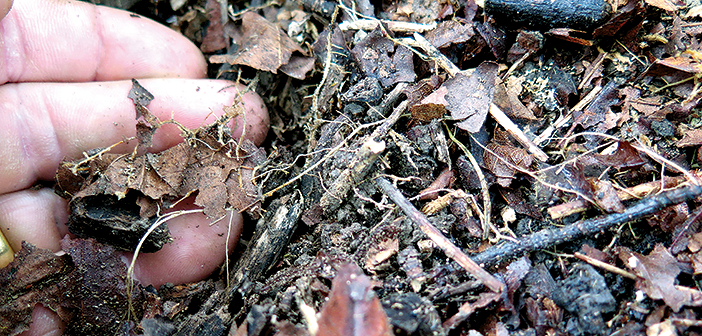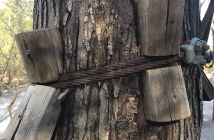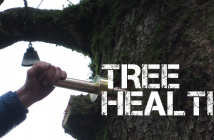Trees are remarkable in their ability to resist gravity and many other natural conditions that bring large loads to bear. When rain, snow, ice, and wind are added to the overriding force of gravity, the loads that trees must sustain can become very large. Not to mention human interactions—such as drilling holes and adding structures—that can influence the growth of a tree.
So, how do trees do it? How do they build their biological structure to stand up, compete with other trees and vegetation, and survive for so long? Engineers who have studied trees consider them to have a 1.5 to 2 times safety factor. That’s some smart engineering.
BIOLOGY
Trees do not heal in the manner that humans do, by producing new cells and shedding damaged ones. Instead, trees retain damaged cells and continue to grow over them, adding a new layer over the surface every year. Essentially, a tree grows a new tree around the existing tree every year. This process continues until the tree dies. The ability to keep growing and to continuously add structure and strength over time is unique to trees.
Trees produce new cells every growing season. There are three “zones” on a tree that contain meristematic cells, which are necessary for new growth. And different types of meristematic cells determine different things: The shoot apical meristem (SAM) produces the above-ground tree organs, like leaves and flowers; the root apical meristem (RAM) provides new cells for root growth; and the final meristematic zone, the cambium, lies just beneath the bark and adds a new layer of wood (xylem) and a new layer of bark (cambium) each year.
Why is this important? This concept of tree growth is paramount for people building structures that utilize living trees for support. I am often surprised at how much folks don’t understand about how a tree grows. Many do not realize that, when a tree grows, it is only getting taller at the places where the new shoots elongate; that is, at the apical meristem of branch tips. The tree grows in diameter along the cambium layer that surround all of the woody parts. This means that a tree’s trunk is only getting fatter, not taller, thus if you attach something to a tree, that item will remain at the same height over time. And, if the attachment is firm, the tree will grow to envelop it as new layers are added.
STRESS AND MECHANICAL LOADS
Another important trait of tree biomechanical structure is that trees adjust their shape to support themselves and resist the mechanical loads applied by their environment. Trees must resist the overriding force of gravity as they grow, and must also be strong enough to accept additional loads from rain, snow, ice, and wind. This method of growth is the reason that trees often develop unusual shapes, depending on where they grow and what competition for light and resources surrounds them.
Trees add material strategically to even out the stresses and strains on their structure. This means that the part of a tree exposed to a mechanical load should grow larger and stronger, reinforcing that area. Where loads are small, trees reduce or restrict growth. This allocation of energy to support the tree means that growth will differ in certain areas, eventually producing an optimized shape.
VISUAL TREE ASSESSMENT AND KNOWING YOUR SPECIES
The axiom of uniform stress has been used by Claus Mattheck, a professor at Germany’s Karlsruhe Institute of Technology, to describe the growth of trees. Mattheck introduced a biomechanically-based system for assessing trees called “visual tree assessment,” or VTA. The basis behind VTA is the identification of symptoms that trees produce in reaction to weak spots, or areas of mechanical stress. VTA allows a knowledgeable arborist to observe a tree and make educated assumptions about its structure and the reasons for growing in certain ways.
One of the things to keep in mind regarding VTA is that there are many tree species, each with its own specific characteristics. While many characteristics are species-specific, characteristics may differ within the same species depending on the conditions where the tree is growing.
When a significant load is applied to a tree, as when a structure is attached to it, you can expect a vigorous tree to respond by adding more growth to the area where extra reinforcement is needed. Understanding the characteristics of the tree species you are working with is vital to a successful structure or course.






